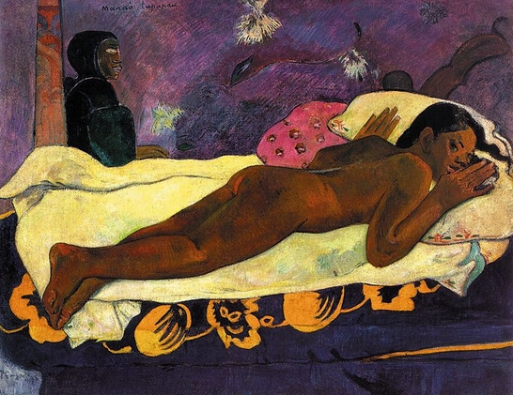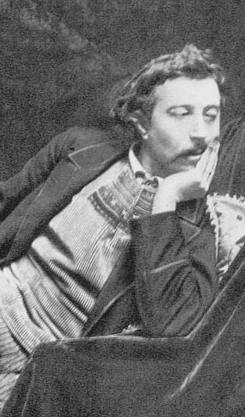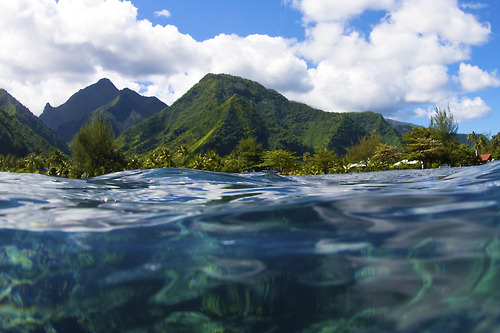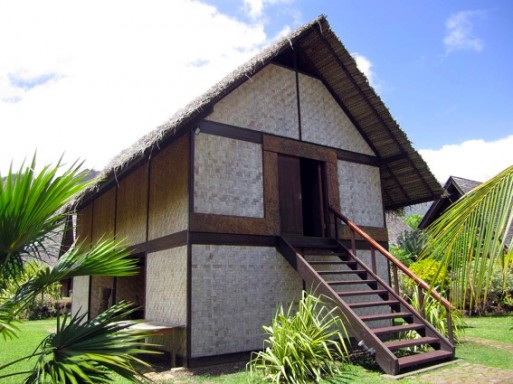Artist Paul Gauguin (1848-1903) fell in love with Tahiti. A native Parisian, the painter’s productivity thrived in a setting that provided an otherwise unimaginable landscape filled with inspiration. What makes his oeuvre unique is not only its integral role in symbolism, but the curious atmosphere pervading each painting. There is always something quiet and pensive about his canvases – even those swimming in bright shades. His 1892 work “L’ésprit des morts veille” (Spirit of the Dead Watching) is the perfect embodiment of this mysterious element. Particularly on the subject of death and dying.
Though he’s often lumped together with the impressionist darlings of the French Salon scene, Gauguin’s work was a far cry from the fluid, dappled works of Monet or Seurat. His was a work of a geometric, sharp wit. “In the two years I have spent here,” he wrote, “with only a few months lost, I have produced sixty-six more or less fine canvases and a number of ultra-primitive sculptures. That is enough for any one man.”
“L’esprit des morts veille” was one of Gauguin’s most beloved pieces. His girlfriend Tehura modeled for the picture, in which a young woman reclines on a bed with a somber, almost totem-esque figure in the background. The room is dominated by a shade of violet that stirs up a sense of ambiguity. In many ways, it echoes the complex expression on Tahura’s face: coy and alive – but attentive. Waiting. There’s an almost playful aspect to her gaze, yet we never lose the feeling that this is an important moment.
“In many ways, it echoes the complex expression on Tehura’s face: coy and alive – but attentive. Waiting. There’s an almost playful aspect to her gaze, yet we never lose the feeling that this is an important moment.”
The viewer is also unsure of where to look – to the left or to the right? – as there is no central figure in the painting. Due to this compositional element, we feel even more on edge, as if anything could happen. The Khan Academy stated that “Gauguin created a haunting, supernatural quality by exploiting what he considered to be the emotional potential of color” in his work. Furthermore, that “when [Gauguin was] describing the painting to [others], he points out how the shades of purple on the wall create ‘a background of terror’ and how the sheet ‘must be yellow, because, in this colour, it arouses something unexpected for the spectator.'”
Apparently Tehura claimed to have felt another ethereal presence while posing for the painting. “Tehura believed in tupapaus,” says the Khan Academy, “[and] the spirits of the dead who in Tahitian mythology inhabit the interior of the island and whose presence illuminates the forest at night.”

 Death in Tahiti: Gauguin’s “Spirit of the Dead Watching”
Death in Tahiti: Gauguin’s “Spirit of the Dead Watching”






 John Mulaney’s “Funeral Planning” on Netflix: No Real Plan
John Mulaney’s “Funeral Planning” on Netflix: No Real Plan

 Composting Bodies Is Now Legal in a Dozen States
Composting Bodies Is Now Legal in a Dozen States














